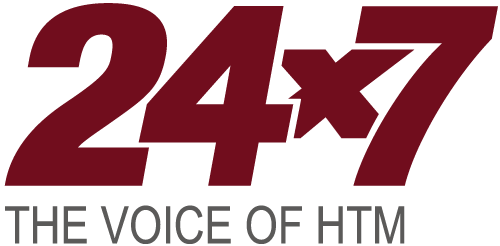A new federal program aims to modernize rural healthcare, with technology managers and digital tools playing a central role in its success.
By Alyx Arnett
The Centers for Medicare & Medicaid Services (CMS) has launched the Rural Health Transformation Program, a $50 billion investment designed to overhaul care delivery in underserved communities across the United States. The five-year initiative invites states to apply for funding to address systemic challenges, including limited resources, staffing shortages, and aging infrastructure, by developing innovative and sustainable healthcare solutions.
The program aims to empower states to build resilient systems that improve access and outcomes. “This program is a historic investment that will catalyze needed change in rural health systems and improve lives for generations to come,” said CMS Administrator Dr Mehmet Oz in the official announcement. “For too long, when it comes to health care access and infrastructure, we’ve left behind the backbone of America. That stops now with this program that will spark real change for rural health care.”
While the funding addresses a need, its success will depend on strategic implementation, particularly through the effective deployment of technology and the development of a workforce capable of leveraging it, according to Craig Escudé, MD, FAAFP, FAADM, FAAIDD, a family physician with over two decades of experience in rural and specialized healthcare. Escudé says the program’s potential lies in its ability to support technology-enabled solutions, targeted workforce training, and collaboration between clinical and technical teams.
Closing Care Gaps with Digital Tools
For rural providers, distance and resource limitations are persistent barriers to care. The Rural Health Transformation Program’s emphasis on technology funding is designed to address these issues. Escudé, a board-certified Fellow of the American Academy of Family Physicians, the American Academy of Developmental Medicine, the American Association on Intellectual and Developmental Disabilities, and president of IntellectAbility, believes that tools such as telehealth platforms, remote patient monitoring systems, and integrated electronic health records are essential for proactive care management. These technologies, he explains, can “help providers detect emerging issues early and manage chronic conditions more effectively.”
This is especially important for vulnerable populations, such as individuals with intellectual and developmental disabilities, who often require specialized care that is scarce in rural areas, says Escudé, noting that digital health assessments and decision-support tools, such as the Health Risk Screening Tool, can help clinicians “identify subtle signs of illness that might otherwise be missed.”
By investing in data-sharing systems and population health analytics, he adds, communities can track health trends and develop targeted preventive programs, making high-quality care more accessible.
Building a Tech-Savvy Workforce
New technology is only effective if the workforce is prepared to use it. Acknowledging this, the Rural Health Transformation Program supports workforce development, a component Escudé sees as key for building long-term capacity. He argues that rural providers require both clinical and technical expertise to deliver coordinated, high-quality care. This necessitates a focus on practical, accessible training.
“The most critical workforce development efforts include cross-training clinicians in the use of digital health tools, telemedicine platforms, and electronic health records to enhance communication and efficiency,” Escudé says.
He also highlights the need for education in population health management and data interpretation, suggesting that online courses, such as the Curriculum in IDD Healthcare, and virtual mentoring can make advanced training feasible even in remote regions. This strategy ensures that clinicians are not only equipped with modern tools but also possess the skills to turn data into actionable clinical insights, he says.
Collaboration as the Cornerstone
Ultimately, translating financial investment into tangible health improvements will require collaboration among clinicians, technology managers, and community health leaders. Escudé emphasizes that this partnership is essential for aligning technology implementation with the practical needs of providers and patients.
“When these groups collaborate, they can ensure that tools such as telehealth platforms, data systems, and remote monitoring devices are practical and effectively utilized,” he says.
In this model, clinicians guide the design of technology around patient care workflows, while technology managers ensure that systems are reliable, secure, and user-friendly. This teamwork fosters a more integrated, person-centered system that builds trust and improves continuity of care, he says. The true success of the Rural Health Transformation Program, Escudé believes, will be measured not just in dollars spent but also in outcomes achieved, including “the effective use of telehealth and data systems” to build a resilient and equitable rural health system.
ID 280805220 © Diana Wilson | Dreamstime.com





